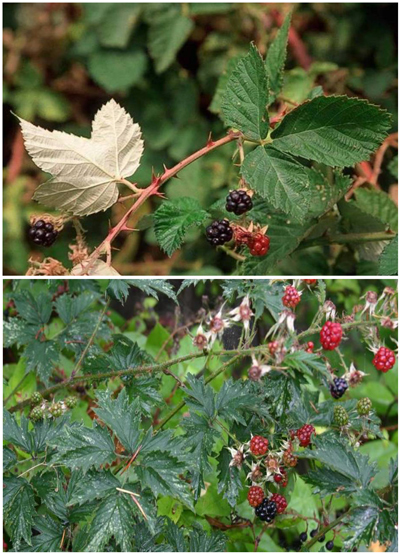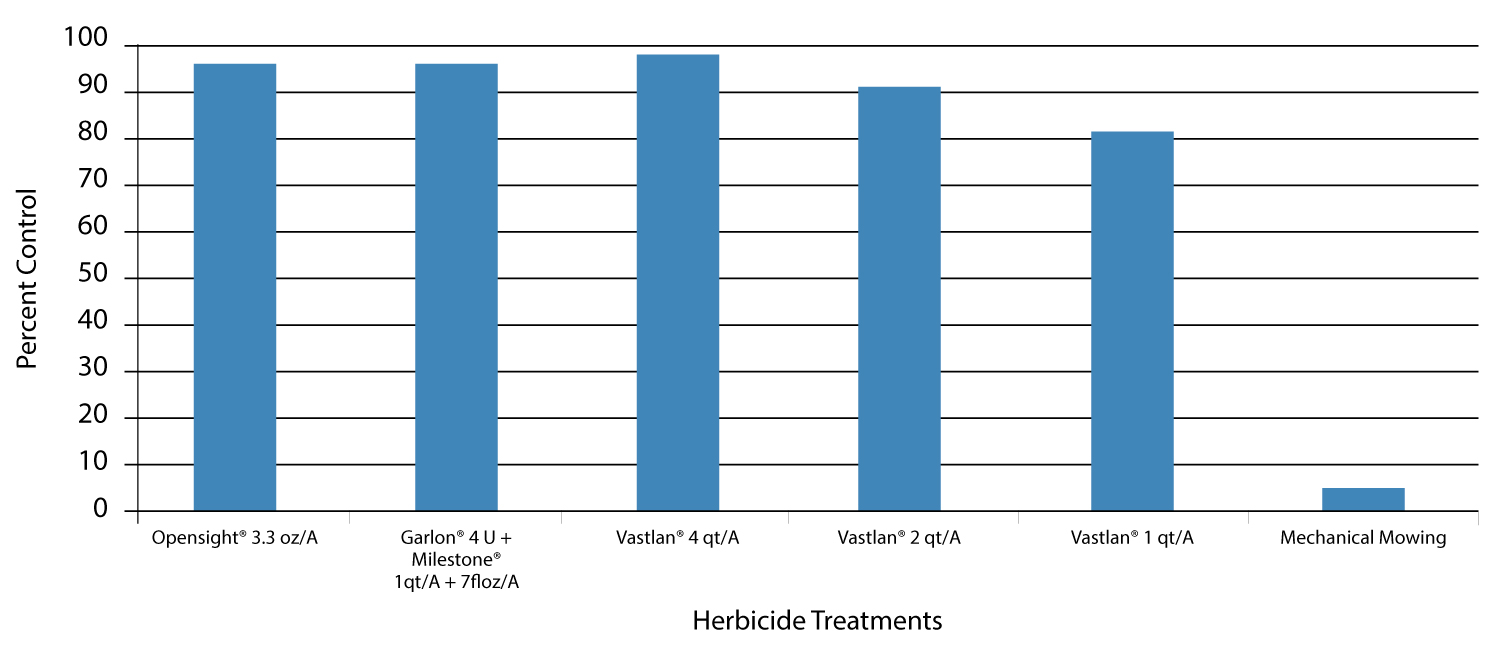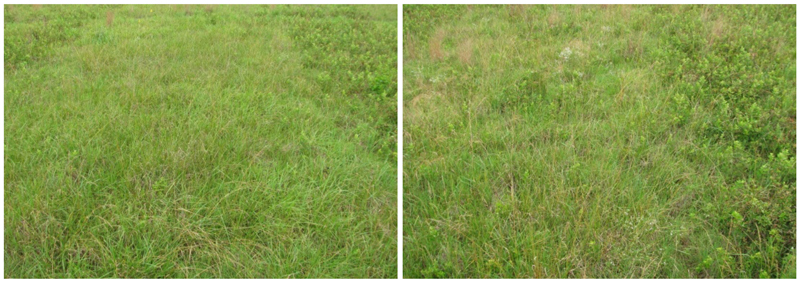Managing Invasive Blackberry with Fall-Applied Herbicides

The USDA Plants database lists more than 20 Rubus species (and associated hybrids) that were introduced to North America. Himalayan blackberry (Rubus armeniacus) and cutleaf blackberry (Rubus laciniatus) are the two most widespread of the invasive blackberry species (Figure 1).


Himalayan and cutleaf blackberry are robust, thicket-forming shrubs up to 9 feet tall with stout, arching canes covered in stiff thorns. Canes can be up to 40 feet long. Flowers are small, white to pinkish in color with five petals. Himalayan blackberry leaves are palmately compound with large, rounded to oblong, toothed leaflets, usually in groups of five on main stems (Figure 2).
Cutleaf blackberry has deeply incised leaflets which can be evergreen, and thorns that are mostly recurved on stems. Plants have a large, deep, woody root crown with thick lateral roots. Plants reproduce by seed, and from root or stem suckers or rooting stem tips.
Blackberry invades riparian areas, stream banks, road and forest edges, meadows and other natural areas, and disturbed open sites. Once established, blackberry can restrict movement of livestock and wildlife, while reducing desirable plant diversity.
Blackberries are difficult to control and often require follow-up treatment since plants are capable of regenerating from the root crown or rhizomes. A combination of mechanical and herbicide treatments followed by a prescribed burn to remove vegetation is often more effective than a single treatment.
The optimum time to apply foliar herbicides is from mid-summer (after bloom) to fall before the first frost. Herbicides applied prior to flowering generally result in removal of top growth with limited control of the root system.
Results of field trials show that the following herbicides provide good to excellent control of blackberry for at least one year when applied as a foliar treatment after flowering and prior to frost:

If blackberry plants have been mowed, shredded, or burned, herbicide application should be delayed until the following growing season. This allows blackberry plants time to re-grow so there is adequate leaf/stem surface for herbicide uptake and translocation.

[1] A 0.25 percent volume to volume ratio is equivalent to 1 quart of surfactant is 100 allons of water.
Dormant-stem treatments are made by applying the spray solution directly to blackberry stems, after leaves have dried and fallen from the plant or when very few leaves remain on stems. This treatment method provides vegetation managers a viable option for controlling invasive blackberry in late fall and winter. This later application timing may also be desirable if blackberries are growing in areas where people frequently harvest the fruit.
For a high-volume, dormant stem application, mix 1 to 2 gallons of Garlon® 4 Ultra (1% to 2% solution) with 2 to 3 gallons of crop oil concentrate, or a methylated seed oil/non-ionic surfactant blend, in 100 gallons of water. Use continuous agitation to keep the herbicide and surfactant in suspension.
Dormant stem treatments work best when applied using nozzles with a smaller droplet size, to ensure uniform stem coverage. Treat as many of the blackberry stems as possible. If only one side of a blackberry clump is treated, then only that side of the plant will be controlled. Orient the spray pattern to align with the target brush structure as this can increase interception by the target stems. Spray the stems until thoroughly wet, but not to the point of runoff. Blackberry control with a dormant stem application is optimized when the bark is not saturated with water from rain.
While dormant stem applications will prevent leaf brownout, the brown stems will still be visible the next spring. Mowing may be advisable to remove dead stems in areas where aesthetics are important. Grass growing beneath treated blackberry stems may be injured by the oil-based surfactant in the spray solution, but should regrow the following season.
Physical and Mechanical methods for invasive blackberry management can be found in the reference section below.
Celestie Duncan contributed to this article.
TM ® Trademarks of Corteva Agriscience and its affiliated companies.
Milestone, Opensight, and Capstone herbicides are not registered for sale or use in all states. Contact your state pesticide regulatory agency to determine if a product is registered for sale or use in your state. When treating areas in and around roadside or utility rights-of-way that are or will be grazed, hayed, or planted to forage, important label precautions apply regarding harvesting hay from treated sites, using manure from animals grazing on treated areas, or rotating the treated area to sensitive crops. Consult the label before purchase or use for full details.
State restrictions on the sale and use of Garlon 4 Ultra herbicide apply. Consult the label before purchase or use for full details. Always read and follow label directions.©2021 Corteva
Sharing innovative research, success stories and tips with invasive plant managers.